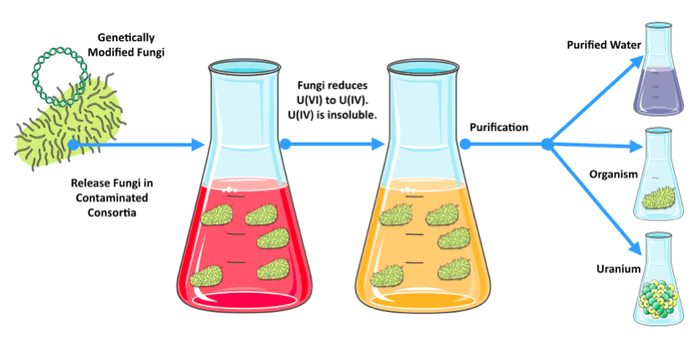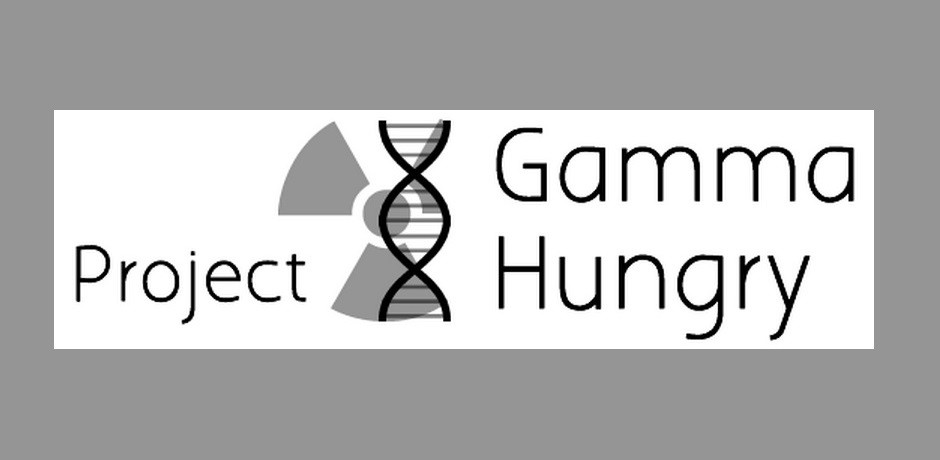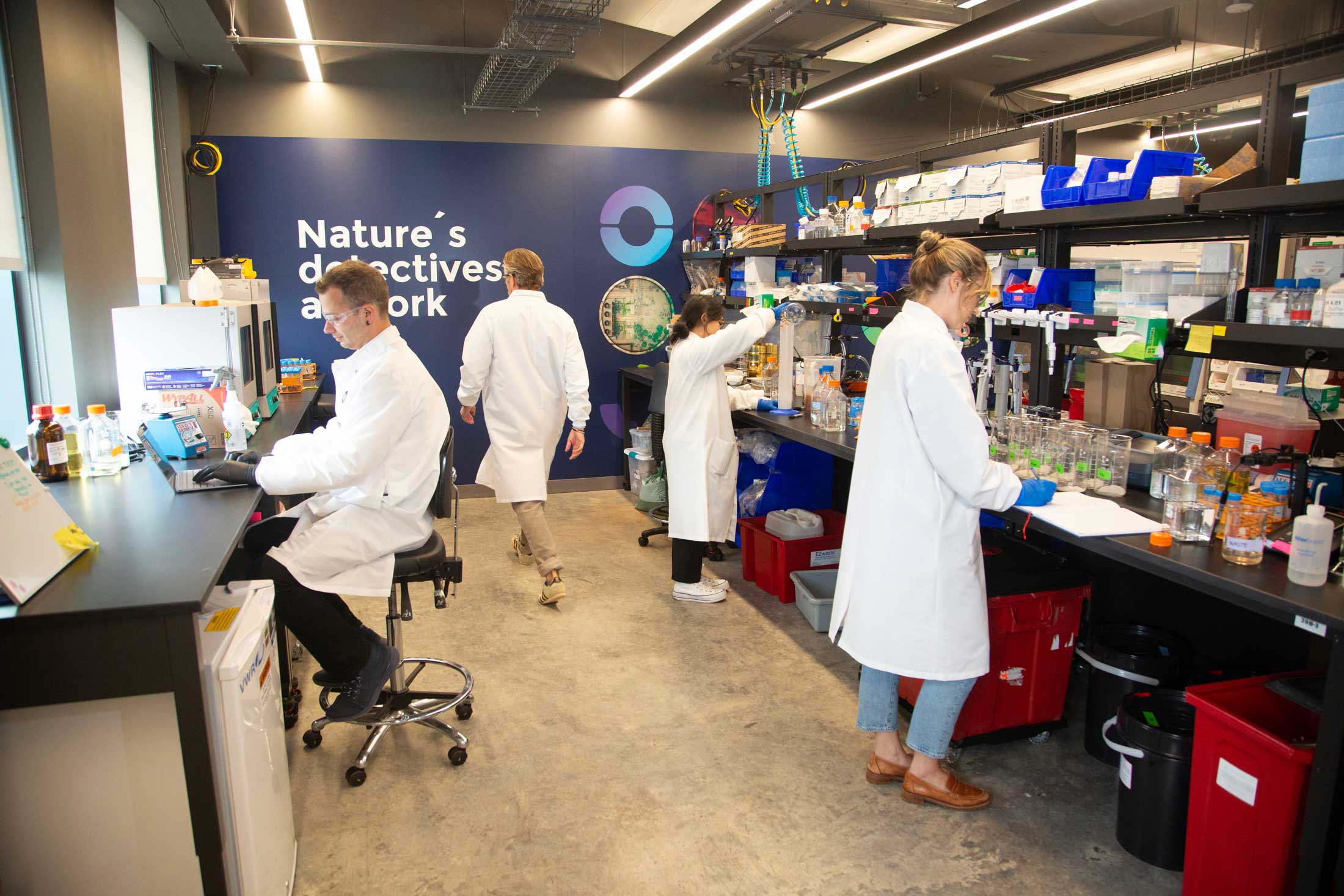Environment
Can Crowd Funding Build A Biological Answer to Nuclear Waste?
Jun 11, 2014
If Aaron Berliner has his way, "Nom, Nom, Nom" could soon be the answer to remediating areas contaminated by radioactive nuclear waste. After a brief stint with NASA working on a novel metabolism, Berliner found work at Autodesk with the Bio/Nano/Programmable Matter Group. In addition to rent money, Autodesk has provided a steady stream of indirect mentorship, guidance, and support for his idea to apply synthetic biology to clean up nuclear waste. Now, Berliner has turned to Kickstarter to raise early capital for his company, Beyond Berlin. What's the project about, and could it really work?
What?
Shortly after arriving at Autodesk Berliner met with CTO Jeff Kowalski, who introduced him to Naveen Jain (founder of Moon Express, inome, and InfoSpace), who suggested he attempt a crowd funding campaign. Fast forward to today and Project Gamma Hungry is seeking $110,000 on Kickstarter to complete critical genome engineering and build a prototype bioreactor for decontaminating and removing nuclear waste from isolated water sources (think Chernobyl or Fukushima). Both tasks are part of the Design, Build, Test Cycle.
Berliner admitted that the project's roots stem from his work with NASA and an intellectual duel with his physicist friends. "They would say, 'We split the atom'. Well, nuclear power plants just make steam. I can do that in my kitchen. I began to wonder how I could marry biology and nuclear power while working toward a global-scale solution. So, naturally, cleaning up nuclear waste came to mind."
If Beyond Berlin attracts enough funding and proves its scientific hypothesis (discussed below), then it will proceed to build a larger bioreactor, begin talking to companies that are struggling with the problem, and attempt to secure permits to conduct field tests.
Why?
Because you like sushi. Also, approximately 12% of the world's electricity needs are supplied by nuclear power. While atomic power is hands-down the world's safest energy source (see #25), the handful of human errors and close calls that have occurred to date will take considerably longer to remediate than mistakes from other energy sources. As more countries turn to nuclear power to quench their energy needs -- there are 72 new nuclear reactors under construction right now in addition to 435 operating reactors -- we'll need better solutions for any potential disaster or disasters that could occur.
How?
First, Project Gamma Hungry will need a host that withstands and utilizes radiation (radiotrophic). Enter, stage right, the fungus Cladosporium sphaerospermum, which has been found growing in radioactive areas in Chernobyl and reportedly contains special melanin pigments to convert radiation into cellular energy. Second, the team will need the ability to reduce uranium into a less-lethal and soluble form for separation and remediation. Enter, stage left, genes from the bacterium Shewanella oneidensis, which can reduce metal ions with a unique electron transport pathway.

Image source: Beyond Berlin.
The goal is to create a fungus that withstands and metabolizes radiation while simultaneously reducing uranium. The idea works in theory, but has never before been demonstrated. As a result, there is plenty of skepticism swirling around Berliner's idea.
Where?
Beyond Berlin was the first company to sign with Berkeley BioLabs, which provides lab space, mentorships, critical feedback, and expertise to early stage companies and individuals infected with crazy ideas. Essentially, it's a hybrid accelerator/hackerspace designed to get scientists and companies to their proof of concept as quickly as possible. "It's incredibly important for young, resource-strapped companies to have access to the services that Berkeley BioLabs provides," Berliner said. I couldn't have said it better myself.
What if the project doesn't reach its $110,000 funding goal?
The Kickstarter project is still over $100,000 away from its goal with just 15 days to go. However, if the crowd funding campaign is unsuccessful, Berliner expects to forge ahead with alternative funding sources such as grants. Of course, every dollar counts at this stage in development.
What if the scientific hypothesis is proven incorrect?
Even if the Kickstarter project proves successful, the scientific hypothesis may prove incorrect. In other words, incorporating an electron transport pathway into a radiotrophic organism may not result in decontaminated water or less-lethal and soluble uranium. If things don't work out Beyond Berlin has two additional projects waiting in the wings. Project BioShock plans to explore and characterize bioelectrochemistry in biological phenomena, while Project Endosymbiotics plans to pioneer a platform for in-vivo physiological regulation and medical therapeutics.
The real value of Project Gamma Hungry
Sure, it may be a far-fetched idea with significant hurdles on the road to commercialization, but there aren't an abundance of proposed solutions for nuclear waste remediation to choose from. Whether or not Project Gamma Hungry is successful, I think the real value resides in demonstrating that individuals have the ability to tackle global-scale problems with novel biological tools in the first place. This and similar applications could go a long way to prove to everyday citizens that synthetic biology is far more than manufacturing chemicals and food ingredients.
Follow Maxx Chatsko on Twitter @BlacknGoldFool
Follow Beyond Berlin on Twitter @AaronBerliner1


















